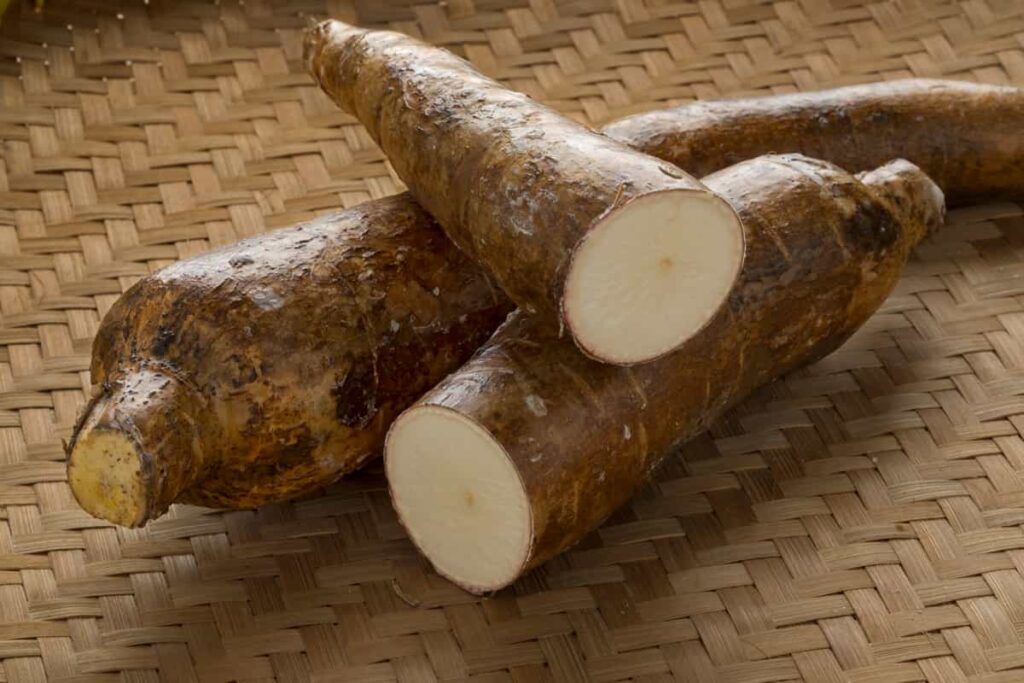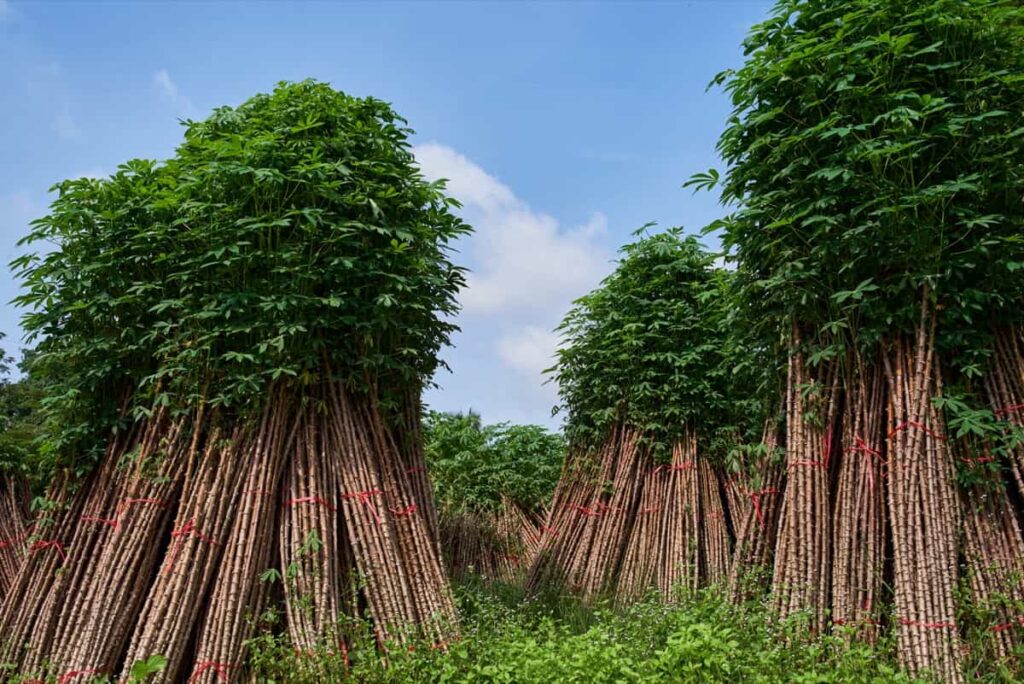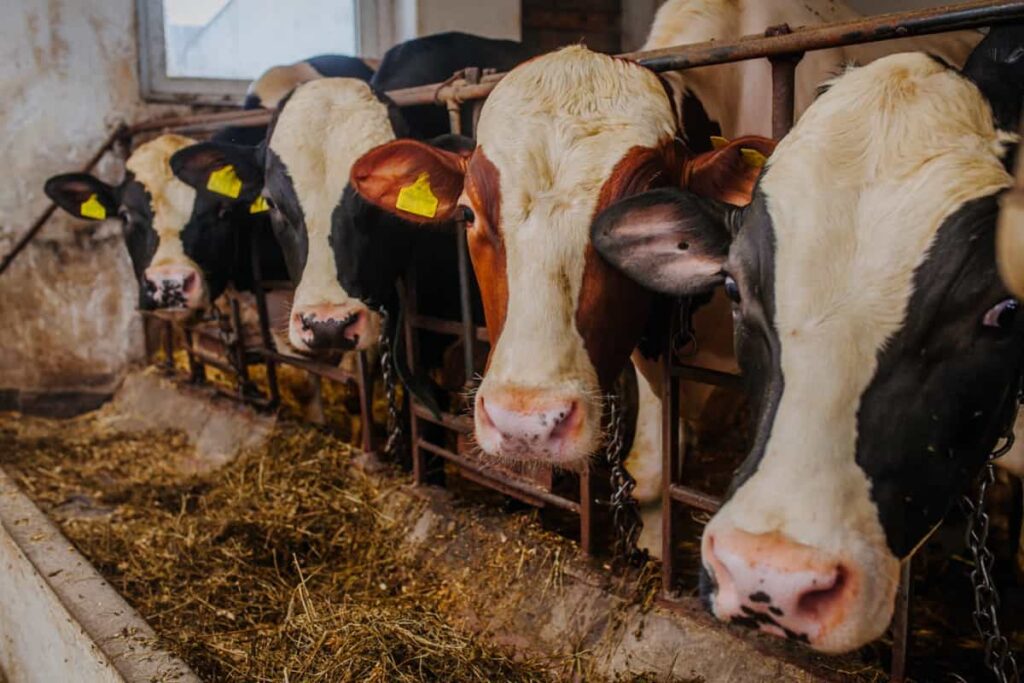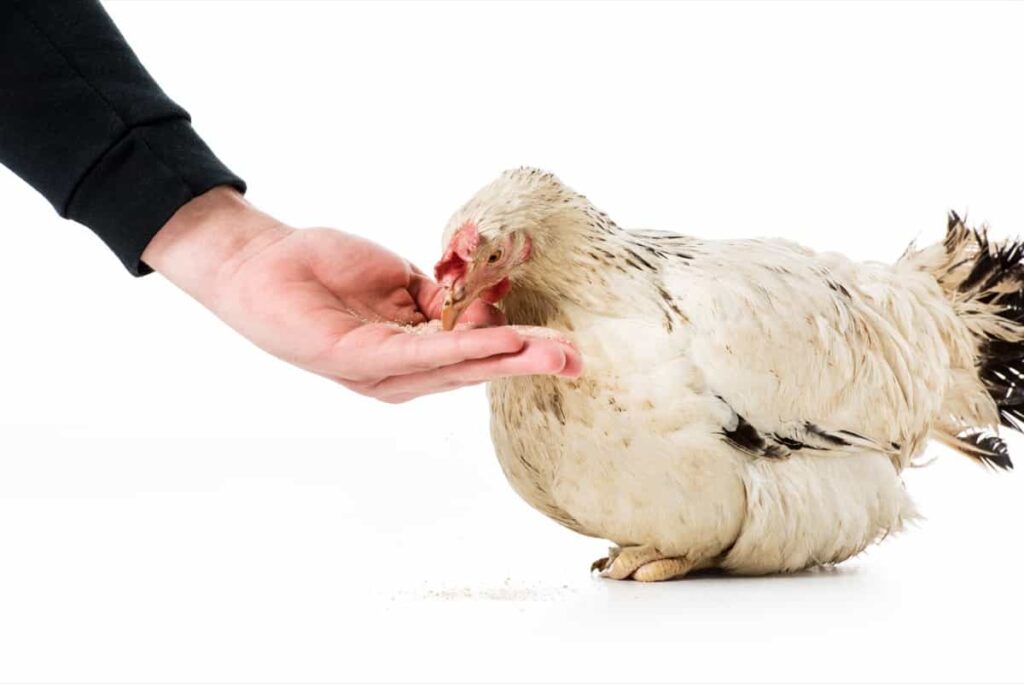Cassava offers a wide range of uses in livestock and poultry feed. Its versatility makes it an ideal choice for farmers looking to optimize their animals’ nutrition while keeping costs under control. In addition to being an excellent source of energy, Cassava also contains essential nutrients that are important for maintaining optimal health in livestock and poultry. These nutrients contribute to muscle development, immune function, reproductive health, and overall growth.

Cassava as Livestock and Poultry Feed
Nutritional Benefits of Cassava in Livestock and Poultry Feed
Cassava is a versatile and nutritious feed ingredient that can greatly benefit livestock and poultry. It is rich in carbohydrates, making it an excellent energy source for animals. The main nutritional benefit of Cassava is its high fiber content.
Another advantage of using Cassava as feed is its versatility – it can be used fresh or processed into different forms, such as pellets or chips, depending on the specific needs of the farm operation. Including Cassava in livestock and poultry, diets offers numerous nutritional benefits that support optimal growth, health, and productivity.
Feed Cassava to Poultry: Considerations and Best Practices
It is crucial to ensure that the Cassava used in the feed has been properly processed and detoxified. Raw or improperly processed Cassava contains toxic compounds, which can be harmful to poultry. To overcome this challenge, farmers should adopt proper processing techniques such as soaking, boiling, or fermenting the Cassava before incorporating it into the feed. This helps reduce the levels of cyanide and makes it safe for poultry consumption.
In case you missed it: 15 Best Livestock Feed Pellet Making Machines With Price for Small and Large Animal Feed Pellet Making

Another important aspect is balancing the inclusion rate of Cassava in the feed. Ensuring a well-balanced diet for poultry is essential when using Cassava as a feed ingredient.
Utilize Cassava in Ruminant Nutrition: Opportunities and Challenges
Ruminant animals, like cattle and sheep, have unique digestive systems that allow them to utilize fibrous plant materials efficiently. Cassava, with its high fiber content and energy-rich tubers, presents both opportunities and challenges when it comes to ruminant nutrition. The main advantage of utilizing Cassava in ruminant diets is its high energy content. The carbohydrates present in Cassava are readily fermentable by rumen microorganisms, providing a valuable source of energy for these animals.
However, there are also some challenges associated with feeding Cassava to ruminants. One major concern is the presence of anti-nutritional factors such as cyanogenic glycosides in raw Cassava roots. Additionally, while Cassava can serve as an excellent source of energy for ruminants, it may be deficient in certain essential nutrients. This necessitates careful formulation and balancing of the diet to meet the animal’s nutritional requirements.
Cassava is a Sustainable Feed Ingredient for Swine Production
Cassava, a versatile and sustainable crop, has gained recognition as an excellent feed ingredient for swine production. Its high carbohydrate content and digestibility make it a valuable source of energy in pig diets. Incorporating Cassava into swine diets does come with some considerations. The presence of anti-nutritional factors like cyanogenic glycosides should be carefully managed through processing techniques such as fermentation or drying.
In case you missed it: 50 Cow Dairy Farming Project Report: Profits, Setup Cost, and Bank Loan in India

As the demand for sustainable livestock production continues to grow globally, incorporating Cassava into swine diets presents a promising opportunity for farmers seeking environmentally friendly alternatives. By harnessing the potential of this versatile crop as a feed ingredient, we can contribute towards more sustainable and efficient pig farming practices benefiting both producers and our planet.
Incorporating Cassava By-Products in Livestock Feed Formulation
These by-products include Cassava leaves, stems, peels, and even Cassava meal after starch extraction. Furthermore, including these by-products in animal diets can be economically beneficial for farmers. Cassava by-products are often considered low-cost or even free alternatives to traditional feed ingredients like corn or soybean meal.
However, it’s important to note that certain considerations should be taken into account when incorporating Cassava by-products into livestock feed formulation. Utilizing Cassava by-products in livestock feed formulation presents an opportunity for sustainable agriculture practices while maximizing resources efficiently. Cassava-based diets have shown promising results in improving animal performance.
Effects of Cassava-Based Diets on Animal Performance and Health
Cassava-based diets have been gaining attention in recent years as a potential alternative for livestock and poultry feed. This starchy tuber has shown promising effects on animal performance and health, making it an attractive option for farmers.
The main benefit of including Cassava in animal diets is its high energy content. Cassava contains carbohydrates that can provide a significant source of energy to animals, promoting weight gain and overall growth. Cassava contains various bioactive compounds, such as antioxidants and polyphenols, which are known to boost immunity.
In addition to these advantages, incorporating Cassava by-products into animal feed formulations can also be economically beneficial for farmers. Cassava is readily available at affordable prices in many regions worldwide, making it a cost-effective option compared to traditional feed ingredients.
Process Cassava for Improved Utilization in Livestock and Poultry Feed
With the right processing techniques, Cassava can be transformed into a valuable resource for livestock and poultry. The main step in maximizing the utilization of Cassava for animal feed is removing toxic compounds such as cyanide. Cassava contains naturally occurring cyanogenic glucosides, which can be harmful to animals if consumed without proper treatment.
Another important aspect of processing Cassava involves increasing its nutrient digestibility. Supplementing processed Cassava with other protein-rich ingredients like soybean meal or fishmeal can help balance the amino acid profile of the final feed formulation. This ensures that animals receive all essential nutrients necessary for their growth and overall health.
Economic Viability of Using Cassava as Animal Feed
Cassava-based diets have been shown to improve the growth rate, feed efficiency, and overall productivity of animals. The high energy content and digestibility of Cassava make it an excellent source of nutrition for livestock and poultry.
In case you missed it: 18 Best Egg Laying Chickens: Foods that Increase Egg Production, Egg Laying Frequency, and Egg Laying Chart

Aside from its nutritional benefits, using Cassava as animal feed also contributes to sustainable farming practices. By utilizing Cassava by-products that would otherwise go to waste or require disposal costs, farmers can reduce their production expenses while minimizing environmental impact.
Furthermore, the economic viability of using Cassava is evident through cost savings on feed inputs. Cassava is generally cheaper compared to other conventional feeds like corn or soybean meal. Incorporating Cassava into livestock diets allows farmers to optimize their resources without compromising animal health or performance.
Frequently Asked Questions about Cassava as Livestock and Poultry Feed
Is Cassava Suitable for All Types of Livestock and Poultry?
Yes, Cassava can be fed to various types of animals, including cattle, pigs, chickens, ducks, and even fish. It provides a valuable energy source and nutrients for their growth and development.
Are There Any Precautions When Using Cassava as Feed?
One important consideration is the presence of cyanide in raw or unprocessed Cassava roots. To make them safe for consumption by animals (and humans), proper processing methods such as boiling or fermentation must be employed to reduce cyanide levels significantly.
How Does Processing Affect the Quality of Cassava Feed?
Processing methods like drying or fermenting help break down harmful substances like cyanide and improve nutrient availability for animals. These processes also enhance palatability and shelf life.
Can Cassava Be Used as A Primary Source of Feed?
While Cassava can serve as a valuable component in animal diets due to its energy-rich composition, it is not recommended to use it solely. It should be supplemented with other feeds to ensure balanced nutrition.
Is It Safe for Animals to Consume Cassava?
Raw or unprocessed Cassava contains cyanide compounds, which are toxic to animals. However, when properly processed and detoxified, it becomes safe for consumption.
Conclusion
Cassava is a versatile and nutritious crop that has been gaining popularity as a feed ingredient for livestock and poultry. The primary use of Cassava in animal feed is as a source of energy. The high starch content in Cassava provides a readily available energy source for animals, helping them meet their daily energy requirements. This can be especially beneficial for growing animals or those with high activity levels.
- Profitable Village Farming Business Ideas in 2024
- High-Yield Aquaculture: Fast-Growing Fish for Farming
- Effective Fish Pond Construction Techniques for Beginners
- Irrigation and Water Management in Pineapple Farming
- Blossom to Harvest: Mastering Flowering and Pollination in Papaya Farming
- Pig Fattening Essentials: From Selection to Sale for Beginners
- Raising Wagyu Cattle: A Complete Guide for Premium Beef Production
- Soil Types and Their Water Holding Capacity
- Optimizing Irrigation Schedules for Coconut Groves for Enhanced Yield
